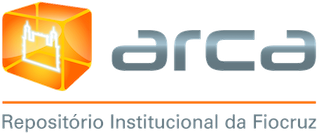| Author | Prado, Roberta Oliveira | |
| Author | Caldas, Iramaya Rodrigues | |
| Author | Pereira, Gustavo Miranda Varella | |
| Author | Andrade, Marcus Vinicius Melo de | |
| Author | Melo, Jose Renan Cunha- | |
| Access date | 2023-07-26T17:01:42Z | |
| Available date | 2023-07-26T17:01:42Z | |
| Document date | 2010 | |
| Citation | OLIVEIRA-PRADO, Roberta et al. Swine pericardium as dermal substrate for human keratinocyte culture. Br J Dermatol.,v. 162, n. 2, p. 251-257, 2010. doi: 10.1111/j.1365-2133.2009.09479.x. | en_US |
| ISSN | 0007-0963 | en_US |
| URI | https://www.arca.fiocruz.br/handle/icict/59793 | |
| Abstract in Portuguese | Background Synthetic skin analogues or living allogeneic or autologous cells are used as dressings for the care of skin wounds, as well as temporary or permanent substitutes for damaged epithelia. Objectives To evaluate if keratinocyte growth on a swine pericardium substrate mimics the natural epithelial layers compared with cultures on allogeneic dermis, which is accepted as having appropriate physical and chemical properties for growth and differentiation. Methods Keratinocytes were cultured on a swine pericardium substrate and allogeneic dermis, either submerged or at the air-liquid interface. At 7, 14 and 21 days postseeding the cultures were evaluated by light microscopy after both haematoxylin and eosin staining and immunohistochemistry. Results Cell-substrate interactions led to growth, stratification and differentiation of cells, with the definition of epithelial layers. The submerged system showed a continuous growth rise on both composites, but this was more prominent with the swine pericardium substrate. An increase in the number of layers at the air-liquid interface with the dermis composites, in contrast to the submerged cultures, occurred only from days 7 to 14. The pattern of keratinocyte growth on swine pericardium substrate was much better in the submerged than in the air-liquid interface cultures. Conclusions The results indicate that swine pericardium is a better substrate than allogeneic dermis for keratinocyte cultures in submerged but not in air-liquid interface cultures. Swine pericardium as a substrate opens one more possibility for skin restoration after trauma or burns | en_US |
| Language | eng | en_US |
| Publisher | Oxford University Press | en_US |
| Rights | restricted access | en_US |
| Title | Swine pericardium as dermal substrate for human keratinocyte culture | en_US |
| Type | Article | en_US |
| DOI | 10.1111/j.1365-2133.2009.09479.x | |
| Affilliation | Departments of Pathology. Internal Medicine and àSurgery. School of Medicine. Federal University of Minas Gerais. Belo Horizonte, MG, Brazil | en_US |
| Affilliation | Rene Rachou Research Centre. Oswaldo Cruz Foudantion. Belo Horizonte, MG, Brazil | en_US |
| Affilliation | Departments of Pathology. Internal Medicine and àSurgery. School of Medicine. Federal University of Minas Gerais. Belo Horizonte, MG, Brazil | en_US |
| Affilliation | Departments of Pathology. Internal Medicine and àSurgery. School of Medicine. Federal University of Minas Gerais. Belo Horizonte, MG, Brazil | en_US |
| Affilliation | Departments of Pathology. Internal Medicine and àSurgery. School of Medicine. Federal University of Minas Gerais. Belo Horizonte, MG, Brazil | en_US |
| Subject | allogeneic dermis | en_US |
| Subject | biocompatible materials | en_US |
| Subject | cell cultures | en_US |
| Subject | keratinocytes | en_US |
| Subject | skin transplantation | en_US |
| Subject | swine pericardium | en_US |
| Embargo date | 3100-12-31 | |

